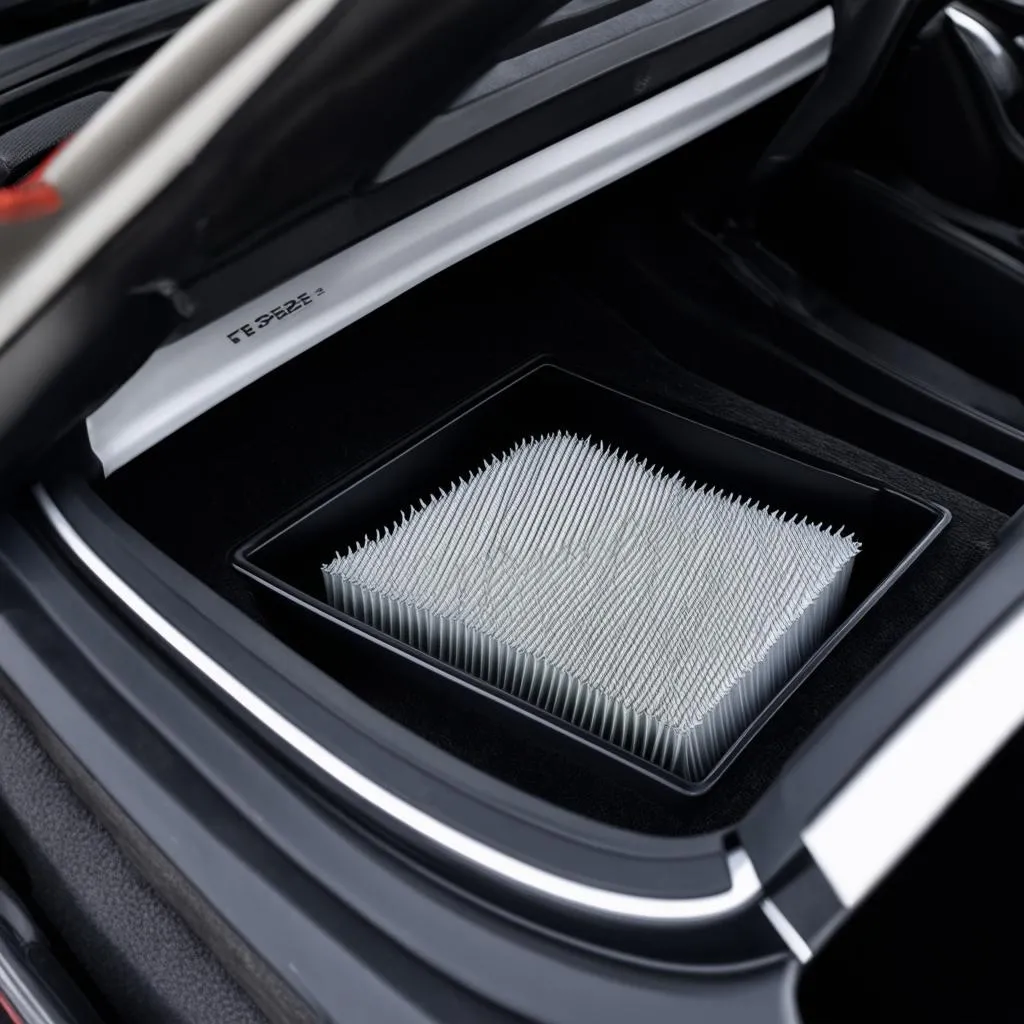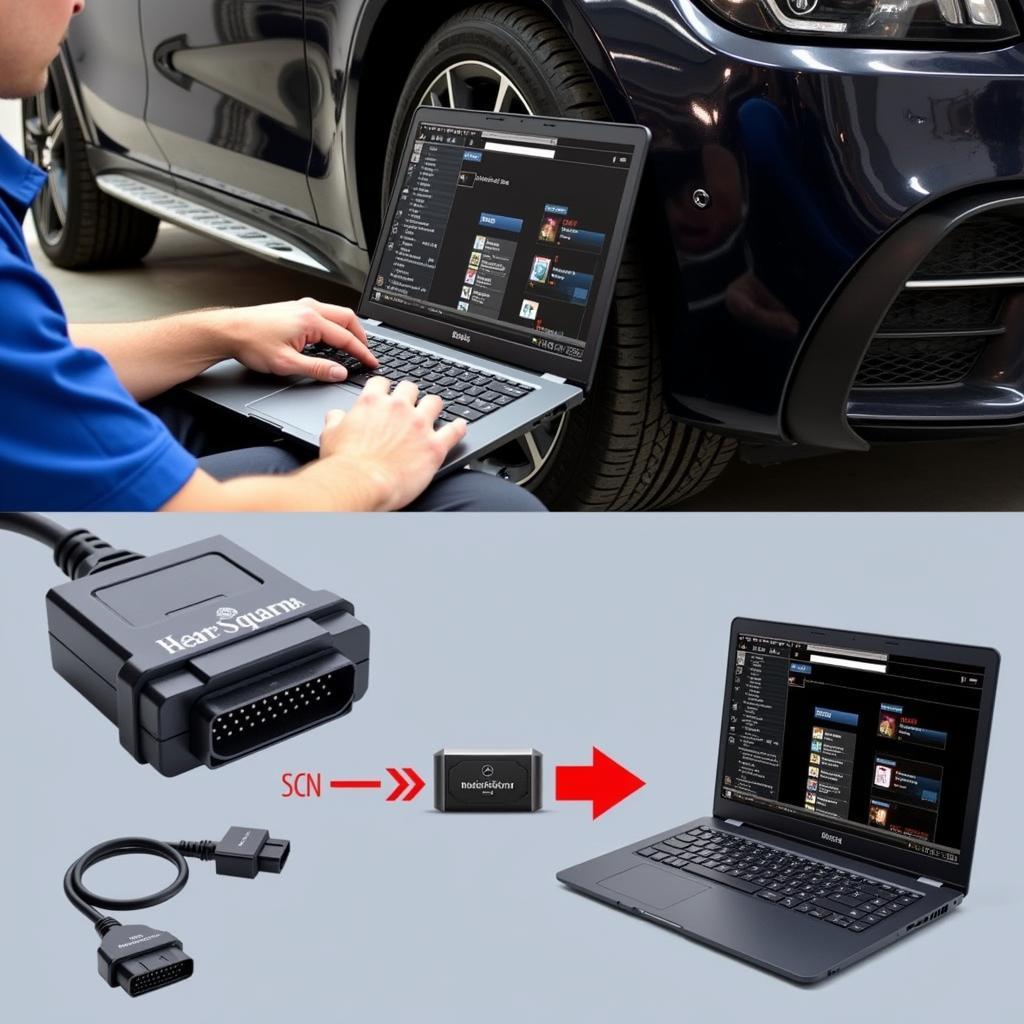Is your 1989 Mercedes 420SEL’s temperature gauge acting up? Don’t sweat it! A faulty temperature gauge can be a real headache, but with a bit of guidance, you can diagnose and fix the issue yourself. This comprehensive guide will walk you through the common causes, symptoms, and solutions for a malfunctioning temperature gauge on your Mercedes.
Understanding the Problem: Why is My Temperature Gauge Inaccurate?
Several culprits could be causing your 1989 Mercedes 420SEL’s temperature gauge to misbehave. Let’s dive into the most common reasons:
- Faulty Temperature Sending Unit: The temperature sending unit is your car’s thermometer, responsible for reading the coolant temperature and sending that information to the gauge. Over time, this unit can wear out or fail, leading to inaccurate readings.
- Malfunctioning Thermostat: The thermostat regulates the engine’s coolant flow. If it gets stuck, it can disrupt the coolant circulation and cause the engine to overheat or run too cold, leading to inaccurate temperature readings.
- Wiring Issues: Loose or corroded wires in the temperature gauge circuit can disrupt the signal between the sending unit and the gauge, resulting in faulty readings or complete gauge failure.
- Gauge Cluster Problems: In some cases, the problem might not be the sending unit or thermostat but a faulty gauge cluster itself. This is less common but can still occur.
Identifying the Issue: What to Look For
How can you tell if your temperature gauge needs attention? Keep an eye out for these telltale signs:
- Fluctuating Gauge Readings: Does your gauge needle swing wildly between hot and cold or get stuck at an unusually high or low reading? This erratic behavior often signals a problem.
- Engine Overheating: If your engine is genuinely overheating, you’ll notice other symptoms like steam from under the hood, a sweet smell of coolant, or even engine knocking.
- Check Engine Light: While not always directly related to the temperature gauge, a check engine light can sometimes point to issues with the cooling system, including the temperature sensor.
Gearing Up for the Fix: Tools and Materials
Before you roll up your sleeves, gather these tools and materials:
- Socket set and wrenches: To remove and install the thermostat housing and temperature sending unit.
- New Temperature Sending Unit: It’s best to replace this part if it’s faulty.
- New Thermostat: Like the sending unit, replacing the thermostat is often a good idea.
- Coolant: You’ll lose some coolant when replacing the thermostat or sending unit.
- Multimeter (optional): To test the temperature sending unit and wiring.
Fixing the Gauge: Step-by-Step Guide
Follow these steps to troubleshoot and fix your Mercedes’ temperature gauge:
- Check the Coolant Level: Ensure your coolant level is within the recommended range. Low coolant can cause inaccurate readings and even overheating.
- Inspect the Wiring: Carefully examine the wiring harness connected to the temperature sending unit and the back of the gauge cluster. Look for any loose connections, corrosion, or damage. Repair or replace any faulty wiring.
- Test the Temperature Sending Unit (Optional): With a multimeter, you can test the sending unit’s resistance at different temperatures to verify it’s functioning correctly. Refer to your car’s repair manual for the correct resistance values.
- Replace the Temperature Sending Unit: If faulty, replace the sending unit. This is a relatively straightforward process. Disconnect the electrical connector, use a wrench to unscrew the old unit, and install the new one.
- Replace the Thermostat: If the thermostat is sticking open or closed, it needs replacement. Locate the thermostat housing, remove it, and replace the old thermostat with a new one. Refill the cooling system with the correct type of coolant.
- Seek Professional Help: If you’re uncomfortable with DIY repairs or the issue persists after trying these steps, consult a qualified mechanic specializing in Mercedes-Benz vehicles.
 Mercedes 420SEL Engine Bay
Mercedes 420SEL Engine Bay
Frequently Asked Questions
Q: Can a bad temperature sensor cause my car to overheat?
A: While a faulty temperature sensor itself might not directly cause overheating, it can prevent you from knowing your engine is overheating until it’s too late. If the sensor doesn’t send the correct signal to the gauge, you might not realize your engine is overheating until it’s already caused damage.
Q: My temperature gauge is reading high, but my engine doesn’t feel hot. What could be wrong?
A: This could indicate a problem with the temperature sending unit itself. It might be sending incorrect signals to the gauge, causing it to read higher than the actual engine temperature.
Q: Can I use any coolant in my 1989 Mercedes 420SEL?
A: It’s crucial to use the coolant type specified in your car’s owner’s manual. Using the incorrect coolant can lead to corrosion and damage within the cooling system.
Q: What is Cardiagtech, and can it help me diagnose my car problems?
A: CARDIAGTECH offers a range of professional-grade automotive diagnostic tools and software. While we can’t provide specific advice on your Mercedes 420SEL without a proper diagnosis, using a reliable OBD2 scanner like those offered by CARDIAGTECH can help you read and understand your car’s error codes, which can be valuable in diagnosing and fixing issues.
 Mechanic Using OBD2 Scanner on Mercedes
Mechanic Using OBD2 Scanner on Mercedes
In Conclusion: Keeping Your Mercedes Cool
A properly functioning temperature gauge is vital for maintaining your 1989 Mercedes 420SEL’s engine health. By understanding the potential causes, recognizing the symptoms, and following this guide’s troubleshooting steps, you can keep your Mercedes running cool and prevent costly engine damage. Remember, if you’re unsure about any aspect of the repair, don’t hesitate to seek help from a qualified mechanic.


